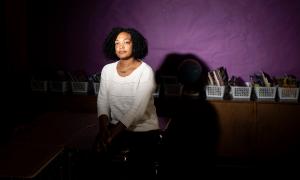The Power of Place: Art as a Tool for Social Justice



July 14 is International Nonbinary People’s Day, a perfect time to ensure you're acknowledging and including nonbinary identities in the work you do. These resources can help you further understand nonbinary identities, show up for nonbinary youth and create more inclusive school environments for nonbinary educators.
This week, we remember those we lost on February 14, 2018, at Marjory Stoneman Douglas High School. We dedicate this edition of The Moment to the young people across the country who have channeled their grief into action, standing up and speaking out to end gun violence in their communities—and every community.
Eleven people are dead after an anti-Semitic gunman opened fire at a synagogue in Pittsburgh. While moments of hatred and violence may feel all-too-common these days, we urge you to use the resources in this edition of The Moment to talk to your students about how hate takes hold and what they can do to fight it.
Amid the pandemic, Asian American people continue to experience racism, violence and harassment. These resources can help you teach the historical precedents for this moment, introduce ways for students to recognize and speak up against coronavirus racism, and start conversations with even the youngest learners about recognizing and acting to address injustice.
“The civil rights movement offers a blueprint for creating meaningful social change,” writes Hasan Kwame Jeffries, Ph.D. Making connections for young people between past movements and present circumstances is imperative, as is having meaningful support in place for honest conversations that can sometimes be difficult. These LFJ resources can help.
Young people have always fought to create a future that is safer and more just—for themselves and for all of us. As students around the globe walk out this Friday to support environmental justice, we hope you’ll find ways to celebrate and support student action during the climate strike and beyond. Here’s how to start.
As an onslaught of anti-LGBTQ efforts—particularly targeting trans and nonbinary youth—continues at the start of the new school year, it’s imperative for educators, parents and caregivers to help young people understand that justice requires an appreciation for the value of identity and diversity among individuals, and that there are actions to take to ensure equity. These LFJ resources can help foster such understanding.